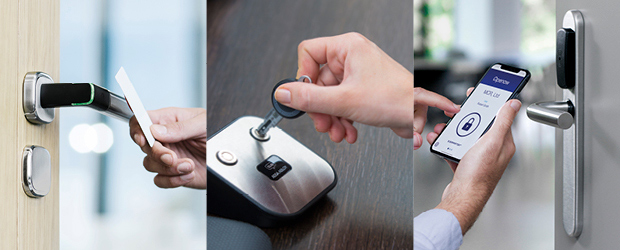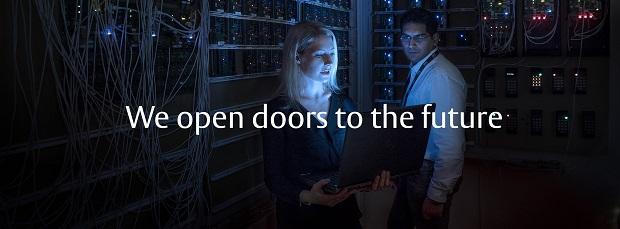* – This article has been archived and is no longer updated by our editorial team –
ASSA ABLOY is a global leader in door opening solutions, with outstanding offerings in smart door locks and access control technologies. Below, we ask Thomas Schulz, EMEA Director Marketing and Communication for Digital and Access Solutions, how the market for access control is changing, and how ASSA ABLOY solutions help secure a diverse range of businesses all over Europe.

Q: Tell us a little about how the market for commercial access control is changing and where ASSA ABLOY is positioned.
A: Access control — the management of people’s ability to come and go — is central to building security in every industry, from universities and hospitals to corporate skyscrapers. Increasingly, customers demand more flexibility, because no successful business stands still, and a better user experience, making use of technologies like our smartphones.
The main headline is, this is a growing, dynamic market. A new report we recently published with IFSEC Global and IHS Markit — “The Wireless Access Control Report 2018” — forecasts overall market growth of 7.9% per year continuing to 2025.
ASSA ABLOY is a leader across many access control sectors. Our high-profile brands have decades of experience securing commercial premises all over the world. They have seen and shaped the market’s shift from physical lock-and-key technology to doors secured with wired access control. These same innovative brands are now leading a steady migration from wired to wireless electronic locking in business premises.
In the 2018 survey of senior security professionals for our biennial report, the share of respondents with a fully-hardwired access control system fell below 50% for the first time. Wireless solutions with secure, battery-powered locks are spreading fast. The report also looks in much more detail at survey data to investigate these changes. It unpicks underlying causes and trends.
 Recommended: The Mexico Fund Predicts Higher Economic Growth For The Mexican Market In Years To Come
Recommended: The Mexico Fund Predicts Higher Economic Growth For The Mexican Market In Years To Come
Q: This new report came up with some intriguing findings, didn’t it? Tell us about a couple of eye-catching ones.
A: We’re detecting growing interest in mobile credentials in the commercial market: using a secure smartphone to unlock a door, basically. IHS Markit forecasts 44 million mobile credentials will be downloaded by 2021, up from just 1 million in 2016 — primarily as a complement to, rather than replacement for, the plastic smart-cards we see everywhere. At ASSA ABLOY, we already have app-based key management solutions for two of our major wireless access control ecosystems, SMARTair® and CLIQ®.
Survey responses also back up the potential of wireless access control solutions for “non-door” applications like parking gates, server racks, lockers, cabinets and lifts. Our wireless SMARTair® cabinet and locker locks are widely deployed in universities, healthcare settings and sports facilities, for example. Wireless CLIQ® mechatronic padlocks are popular with utilities, who often have dispersed outdoor sites where wired access control is not a realistic option.
The more openings that can be secured, unlocked and controlled via a single credential, the better for users and facility managers.
Q: Can you point to an issue that maybe doesn’t get the attention it deserves in commercial access control?
A: I certainly think the question of standards and integration is only beginning to get the right amount of attention. Security professionals — both from our survey data and anecdotally in my own experience — recognise the growing importance of integrating multiple security functions within a single environment. The easiest, most cost-effective path towards integrated systems is to develop on open platforms and to agreed standards. Battery-powered door devices in our Aperio® range, for example, support the OSS–Standard Offline from the Open Standards Security Association.
Open standards make scaling-up more cost-effective and future-proof any large investment in access control — and most investments in security, of course, are large. Procurement is about the long run, and the future has to include better interoperability of security and building management systems. The whole “smart buildings” paradigm depends on it.
 Recommended: Dr Roya Ghafele Wins Award As One Of The UK’s Top Intellectual Property Managers
Recommended: Dr Roya Ghafele Wins Award As One Of The UK’s Top Intellectual Property Managers
Q: You mention a few of your wireless access control solutions — Aperio®, SMARTair®, CLIQ®. Where do these different systems typically get deployed?
A: There is hardly an industry where our wireless access systems are not having an impact! The diversity of our offering and the accumulated experience our technicians and integrators means we can design and install an access control system for pretty much any need.
Aperio® locks are built using open architecture, so those who already have access control and want to add more doors to their existing system can do so. Aperio® wireless locks integrate with security systems from over 100 different access control providers. Security administrators operate their new Aperio®-protected doors from the same interface as their existing system. Integration is seamless.
Our CLIQ® mechatronic locking system combines patented mechanical and electronic protection. It is based on programmable physical keys; a range of wireless locks and padlocks, suited to even the toughest climates; and powerful, user-friendly admin software. The high-end security CLIQ® offers is popular with critical infrastructure and utilities, banks and cash-in-transit businesses. The CLIQ® Connect extension enables companies with dispersed workforces to keep their employee access rights up-to-date using just a mobile phone and a Bluetooth connection.
SMARTair® is a standalone access control system that works right out the box. The software is intuitive, but also powerful, offering real-time “online” monitoring if facility managers need it. SMARTair® is installed in many small businesses, including a growing number of co-working spaces, who love the contemporary aesthetic and slick operation. Hospitals and healthcare centres, care homes, and student accommodation blocks often choose cabinet and locker locks, alongside doors, as part of their SMARTair® system. We also recently launched the companion SMARTair® Openow™ app, so users open a door with a virtual key stored securely on their smartphone.
The 22-page “Wireless Access Control Report” presents a detailed snapshot of the industry in 2018, including coverage of sustainability, Access Control as a Service (ACaaS) and more.
Activate Social Media:


